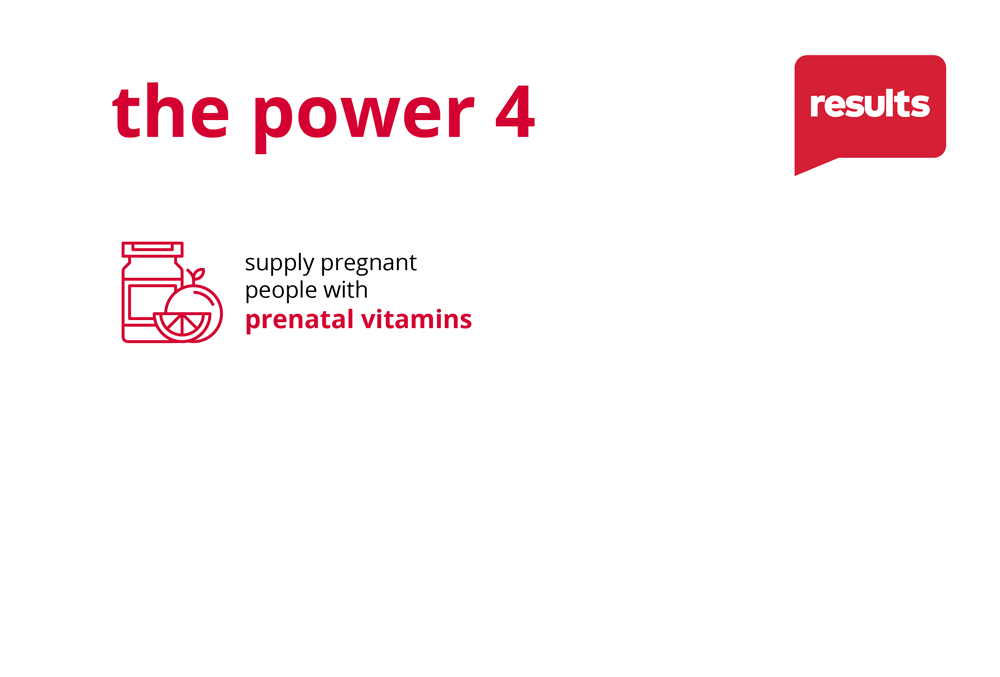Good news: Tackling the global malnutrition crisis
The COVID-19 pandemic, combined with climate change and conflicts like the war in Ukraine, ended decades of steady decline in world hunger. Now a global food and nutrition crisis is pushing one child per minute into severe malnutrition.
Ending child malnutrition has long been a core issue for RESULTS. In the face of the growing crisis, we intensified our efforts in 2022 — and it paid off in significant legislation and public funding.
In October, President Biden signed the Global Malnutrition Prevention and Treatment Act into law. This major victory could help save millions of lives around the world.
“This law’s passage did not just happen on its own,” said RESULTS Executive Director Joanne Carter. “There have been nearly 17,000pieces of legislation introduced since 2020 and only 1% of them have been directly signed into law. Even fewer have passed with strong bipartisan support. Yet the overwhelming majority of both the Senate and House voted yes on the Global Malnutrition Prevention and Treatment Act.”
RESULTS advocates began pushing for this legislation in the fall of 2021, amassing bipartisan support in the House and then the Senate for the bill. Our nationwide network met with their members of Congress and staff, published letters to the editor about the growing global malnutrition crisis and the promise of the legislation, and kept pushing until the law was passed.
The greatest possible impact
Malnutrition afflicts nearly one-third of children under age five and is the underlying cause of half of all preventable deaths in this age group. Ongoing conflicts and climate change are escalating the crisis. The Global Malnutrition Prevention and Treatment Act will make sure the United States does its part and does it with the greatest impactpossible.
Poor nutrition during first 1,000 days of a child’s life — starting in pregnancy and ending with their second birthday — has a profound impact, from a child’s brain development to their immune system to their growth. Calories alone are not enough. The new law directs the U.S. Agency for International Development (USAID) to focus on proven, highest-impact nutrition interventions, often called the Power 4.

- For pregnant women, it’s making sure they receive a special form of prenatal vitamins with essential vitamins and minerals, which increase the chances a baby will be born at a healthy weight and survive to their second birthday.
- For infants, it includes supporting breastfeeding and Vitamin A supplements. A capsule of vitamin A given to a young child twice a year can reduce the chance of death by up to 25% and protect their eyesight and health.
- For young children, it’s treating the most severe malnutrition, called wasting, with Ready-to-Use therapeutic food (RUTF), which consists of nutrition-dense medicinal food that can be used in community-based settings.
“Helping countries expand access to these interventions,” said Carter, “is how we will save the lives of millions of children and protect baby’s brains, women’s and children’s health, and much more.”
The law also requires USAID to increase its tracking of its programs and report on the progress to reach ambitious coverage targets.
Largest commitment of lifesaving treatment
The passage of the Global Malnutrition Prevention and Treatment Act capped a year of grassroots impact. In the spring, RESULTS worked with coalition partners and champions on Capitol Hill to raise awareness of the food, fuel, and fertilizer crises being exacerbated by the war in Ukraine and called for nutrition funding to be included in emergency supplemental spending bills. In May, the $40 billion Ukraine supplemental passed by Congress included $5 billion for global food and nutrition security and humanitarian assistance.
RESULTS also played a key role in realizing the largest commitment ever made to treat severely malnourished children. In July, USAID pledged $200 million for the purchase and distribution of RUTF for severe wasting. Thanks to that commitment, an additional 2.4 million children will receive the lifesaving treatment — the largest increase in coverage ever.
USAID also committed to leveraging its investment to mobilize $250 million in additional funding for RUTF from other donors. In September, donors at the UN General Assembly exceeded that goal, committing another $280 million.
Next step: Doubling U.S. funding
What we helped to achieve this year will be lifesaving for many, but we know it’s not enough. Declines in Vitamin A coverage, particularly in countries with the highest rates of child mortality, and increased malnutrition have reached critical levels that call for urgent action and resources. Malnutrition is preventable and treatable — it should not claim millions of lives each year.
Unfortunately, even with these recent commitments, global nutrition programs are extremely underfunded. In fact, spending on high-impact interventions accounts for less than 1% of global development assistance. Yet every $1 invested in nutrition results in up to $35 in economic returns by eliminating direct health care costs as well as indirect costs like caregivers missing out on work. And well-nourished adults also earn more as adults than peers who experienced chronic malnutrition as young children.
The world has the tools to prevent and treat malnutrition, but it needs greater political will and funding to stop this crisis. When the new Congress convenes in January, RESULTS advocates will be there, asking for a near doubling of U.S. investment in global nutrition. With their passion and persistence and support from our dedicated funders, we won’t stop until that goal is reached.